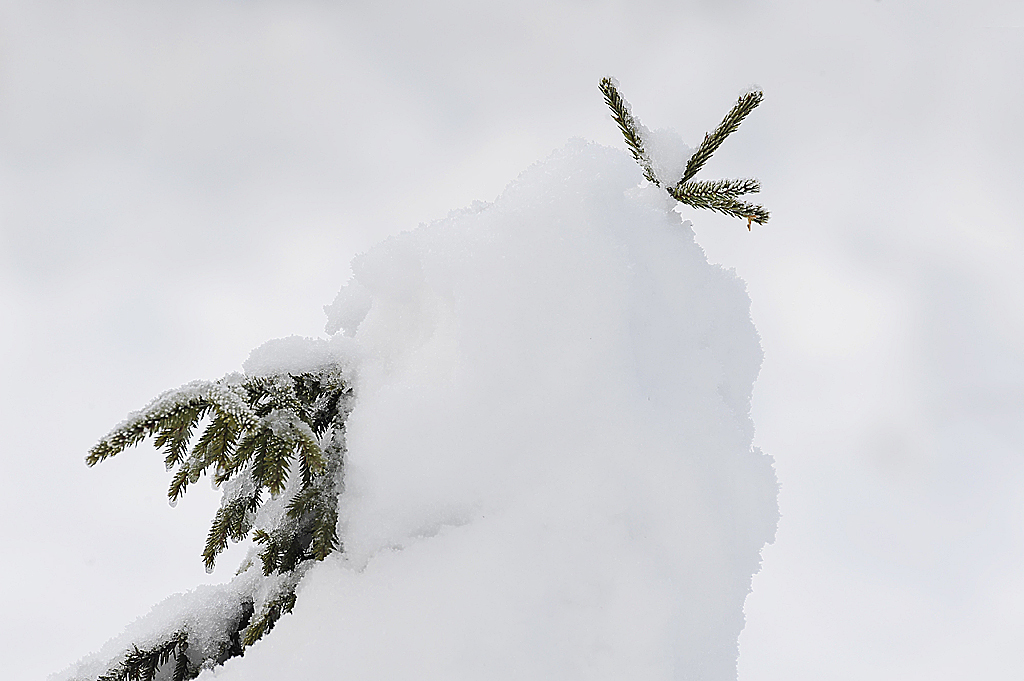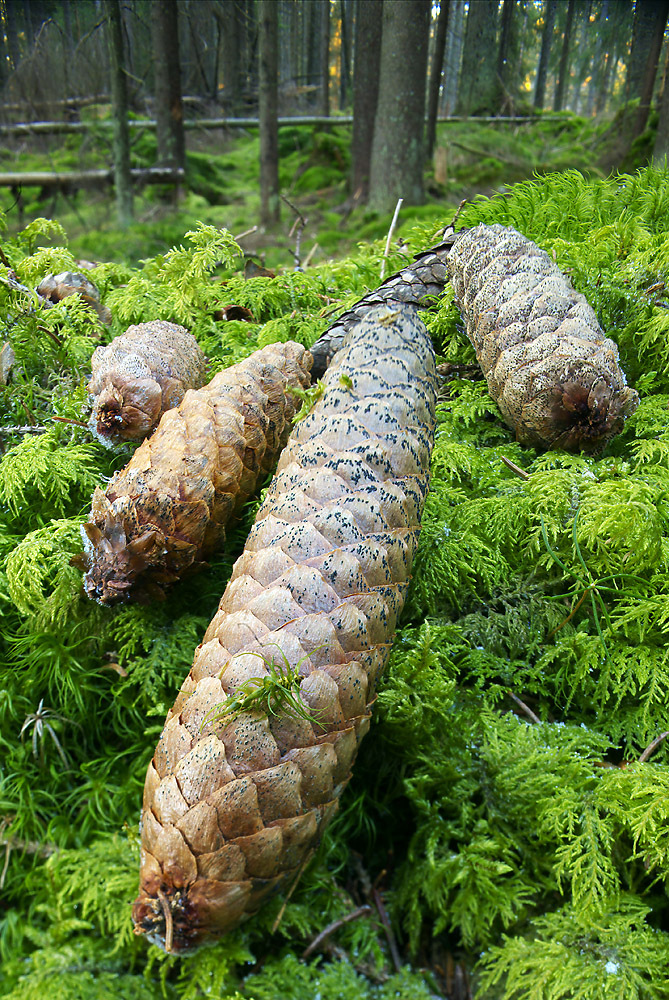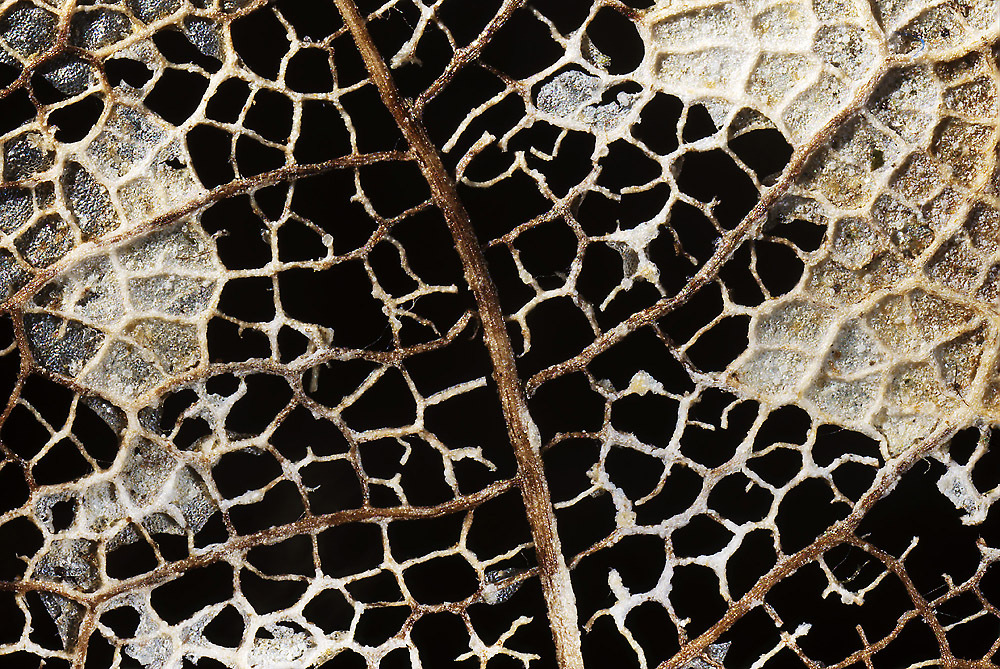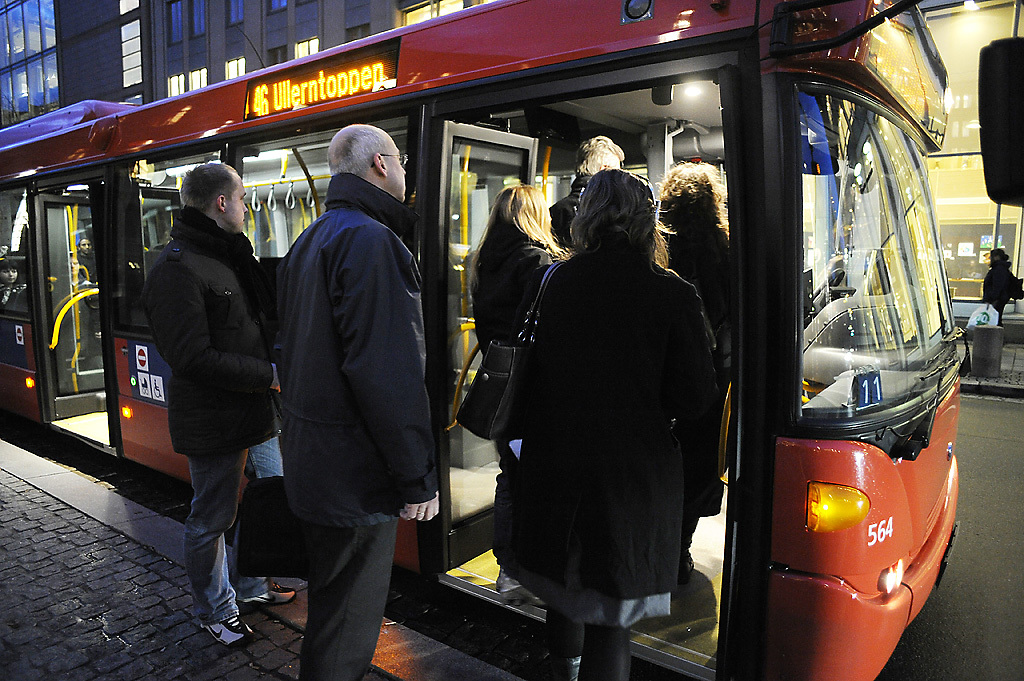| Nikon D3 Digital Camera Reviewed |
|
|
| by Bjørn
Rørslett |
|
4.
Image Quality and Fields of Applications for the D3
Image Quality
A discussion of the concept of "image
quality" without taking the intended use of the output is a
rather futile exercise. What would do for a newspaper or weekly
magazine might not be up to the demands for a fine-art gallery
exhibition. Or vice versa. The Nikon D3 has 12.1 MPix available
and can deliver approx 40 x 60 cm (16 x 24 ") prints more or
less straight off the camera, or you can go the entire way up to
100 x 150 cm (40 x 60") prints with careful post-processing.
All of these will have a technical quality that should satisfy
even critical viewers under realistic viewing conditions. If you
plan on making billboard-sized prints that are to be scrutinised
up close, you might need a handful more of those high-quality
pixels, though. So there is still a niche for an even
high-resolving companion to the mighty D3.
To exploit fully the potential of D3
imagery, using raw (NEF) files is the optimal approach. However,
only a few software applications this time of writing supports D3
NEFs and the outputs do vary in the quality attained. Nikon
Capture NX 1.3 is what Nikon themselves recommend and a free
license is given with each camera. This program must have the
worst speed performance of any RAW converter that I ever have
used, and the user interface is marred by stupid quirks and odd
properties. To round up the bad news, NX is a memory hog of the
worst kind imaginable. Just to zoom into a NEF file takes half a
gigabyte of memory (the processed TIF file is just 35 MB !). Yet,
despite this massive resource drain, the zooming itself proceeds
at a snail's pace and even on my 4-CPU high-end machine it takes
30 seconds to alter the zoom amount. Horrible is the only apt
description. However, it is undeniable that NX can extract more
details from the D3 files than the alternative programs manage to
do. The D3 files also carry with them an instruction set that is
read and acted upon by NX, so you obtain very clean files with
massively reduced noise and almost perfect CA removal. A real
pity the software is made so unattractive and counterproductive,
a feat in itself.
If you chose to rely more on jpgs from the
camera than using NEFs and thus suffer the painful NX, you should
go carefully through the jpg settings of your camera. Firstly,
only jpg (Fine) should be considered. Secondly, the camera should
be set to optimise jpg quality not file size. Thirdly, and likely
the most important point to address, is configuring the Picture
Control options. The default settings will give jpgs that are
optimised for printing, thus the sharpening needs to be cut back
or even set to 'none' if you plan on doing further
post-processing work on such files. There are also colour
controls with which you should experiment to get the final
results you are pleased with. Shooting a known reference target
such as a GretagMacbeth Colour Checker is strongly recommended.
If Active D-Lighting (ADL) is enabled, this setting will
influence the jpgs, but in practice not NEFs unless Capture NX is
employed later in the work flow. The camera's exposure is
adjusted if ADL is set to "Normal" or "High",
generally by less than -2/3 EV and in many cases even less. You
might think this leads to the dreaded "underexposure"
we knew from the old days of film, but as long as the scene
itself has a certain dynamic range (and what motif hasn't, that's
why you shoot it in the first place) and you are within the
dynamic range of the sensor, a mild underexposure won't affect
the RAW data much at all and using subsequently a RAW converter
that ignore the ADL settings, you'll end up with a pretty much
identical output file anyway.
I have yet to observe a significant
dfference between shooting NEFs with 12 or 14-bit depth. The
EXPEED engine internally uses 16-bit all along, so it is the the
output stage that would be influenced by the bit depth choice.
One can speculate that the 14 bits add a little more highlight
headroom, but for field situations this is hard to observe. All
D3 files seem to share the same velvet-like texture and smooth,
delicate tonalites. I also tried to find tangible differences
between using uncompressed and losslessly compressed NEFs and can
only conclude that I can't find any.
Compared to output form other Nikon models,
the files from the D3
will need careful sharpening as they
are prepared for their final output destination. The jpgs at
default camera settings are good to go for being printed
directly, so are not the best starting point for pixel-peeping
activity unless you are familiar with pre-press work. Unless you
rush the files to a news desk, resizing and a good deal of
sharpening are necessary ingredients in the work flow to make the
D3 images exhibit their inherent quality.
Categories of applications
Below is an overview of various fields of
photography and how I envision the Nikon D3 will fit in each
category. It should be fairly obvious that I don't see the D3 as
the panacea and one-camera-can-do-all solution. As such it never
was conceived by Nikon. What's more important is that the D3 can
be applied to a variety of photographic tasks and do many of them
very well. Due to its complexity and wide range of features, the
D3 clearly demands that the photographer spends sufficient time
to master it - just like any other professional-calibre gear.
| Field
of application |
Comment |
| Action and sports |
Outstanding. High
burst firing rate and excellent ISO performance are
benefits |
| Available-light,
candids and feature work |
Outstanding.
One might rephrase this to have "available
darkness" replacing "available light" |
| Portraiture and
studio shooting |
Very good to
excellent. Skin tones and rendition should comply with
stern requirements. The resolution on its own is more
than high enough to show every flaw of the model’s
make-up and skin irregularities. However, the file sizes
may not suffice for making extreme enlargements |
| Landscapes |
Very good except
for the users insisting on using super-wide lenses for
landscapes. Since this drawback relates to the small FX
format and is shared with 35mm silver-halide technology,
it is questionable that this should be hold against the
D3. But anyway this field shows where higher-resolving
and/or larger-format cameras always can do the job
better. |
| Nature photography |
Very good. The
high-ISO performance is beneficial for wildlife and
birding |
| Close-ups |
Very good. The
rich tonality will enhance virtually all close-up
applications. LiveView occasionally can be useful if you
can eschew the limitations of its implementation |
| Night Photography |
Good if you employ
Long Exposure Noise Reduction (LNR) and can make do with
exposures less than 109 minutes. Bad if you insist on not
using LNR, or need exposure duration longer than 109
minutes |
| Astrophotography
|
Probably
not suitable for deep-sky photography since the NR has to
be active. Stacking applications such as startrails
should go well, since individual exposures are short |
| Photomacrography |
Good to very good,
but resolution can be slightly limiting. The LiveView
feature can come in very handy for such applications, but
has its quirks and drawbacks (see discussion here) |
| Technical
photography; involving the use of tilt and/or shift
lenses |
Very
good-excellent. In particular I was pleased to see that
no untoward amount of light fall-off, or ugly asymmetric
chromatic aberration, were in evidence. With the DX
format one tended to get both in abundance |
| General walk-around
use, non-specialised photography |
If you can handle the
camera and don't complain about its weight or bulk, it'll
do for you. If you have the money and the inclination to
purchase a D3, but don't know exactly why, then something
else should be on your shopping list.. |
Now it's high time to show some examples of
what the camera can achieve. The pictures below are meant to
illustrate the quality you can expect from a D3. Most are derived
from jpgs straight off
the camera, unless otherwise noted. My
conclusion is that you will get image quality from D3 to satisfy
even the critical needs, for almost any application to which the
35 mm systems can be used.
Nature
Photography Example illustrating the delicate tonality of
D3 images
|

|
White
on White
Nikon
D3, 200-400 mm f/4 Zoom-Nikkor AIS, f/8 at 1/30 sec, ISO
200
© Bjørn
Rørslett/NN
Getting
this kind of shades of white in the white snow, for a
picture shot under heavily clouded and dull conditions
with a totally "flat" lighting, is a tribute to
the imaging system found in the D3. The original has
remarkable detail and tactile structure in the snow pack
in the foregorund, too.
|
Technical
Photography Example Using Tilt/Shift Lens
|

|
Spruce
Cones on Mossy Forest Floor
Nikon
D3, 28 mm f/3.5, modified for tilt and shift, f/22 at 15
secs, ISO 200
© Bjørn
Rørslett/NN
Using the Scheimpflug principle for
close-ups can yield a surprisingly useful distribution of
the available depth of field, yet there is just so much
you can achieve when the subject has depth in itself and
you approach it closely enough. So there is always a
balance to be struck in terms of the DOF and its
distribution throughout the scene. In this case I gave
priority to the cones and let the background forest go
softer. The details are sharply rendered despite the
small f/22 aperture. For applications like this, critical
focusing is the decisive parameter and having the big
finder of the D3 at my disposal did help a lot in my
securing this shot.
|
Photomacrography
Example
|

|
Venation
in Dead Leaf 6 (X magnification)
Nikon D3, 65 mm
f/4.5 Macro-Nikkor on Nikon Multiphot, f/9, 2 sec,
halogen cold-light illumination, 10 frames stacked with
Helicon Focus
© Bjørn
Rørslett/NN
The D3 camera,
mounted atop my rock steady Multiphot stand, was remotely
controlled for this capture. I used Camera Control Pro
2.0 and remote LiveView to shoot a sequence of 10 frames
with a slight shift in focus, later to be assembled by
stacking software. I might have gotten somewhat better
outcome by opening up the Macro-Nikkor a tad more and
instead added more frames to the stack.
|
Low
Light Applications Become a Breeze with the D3
|
 |
Going
Home After Work Hours
Nikon
D3, 24 mm f/2.8 AIS Nikkor, 3200 ISO, f/2.8, 1/30 sec
(NEF processed in BibblePro 4.9.9b)
© Bjørn Rørslett/NN
|
| Shooting dark winter streets at
high ISO settings with the D3 running on Auto
white-balance and Matrix metering is a tough and
realistic system test. In this case I revived my old
favourite wide-angle lens, the 24 mm f/2.8 Nikkor AIS,
that I had put away for many a good year now since it did
not work well with my DX-format DLSRs. I was genuinely
surprised by the excellent results of this lens on the
D3. Bibble does not read the attached instruction set of
the NEF so the lack of vignetting toward the corners and
the very low CA are the fashion in which D3 captured the
shot. Also noteworthy is the great amount of shadow
detail present, and the excellent balance of the
different light sources (sodium vapour street lamps,
fluorescent tubes and incandescent lamps inside the bus,
very blue light from the night skies above). This is in
fact the exact same colour rendition that the associated
jpg delivered. |



